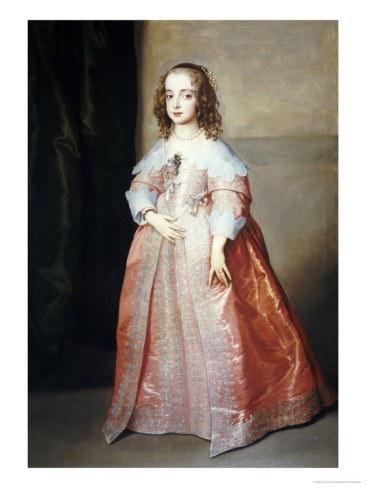
One of my all time favorite characters (she was a bit of a scene stealer in my novel Minette, about her younger sister, Henrietta), Princess Mary Henrietta Stuart was born on the fourth of November 1631 in St James’ Palace, London, the eldest daughter of Charles I and his tiny, exquisite French wife Henrietta Maria.
Doting parents anyway (although Henrietta Maria could be something of a termagant), the royal couple absolutely adored their bright and pretty eldest girl, who was given the title Princess Royal in 1642, setting a precedent that endures to this day.
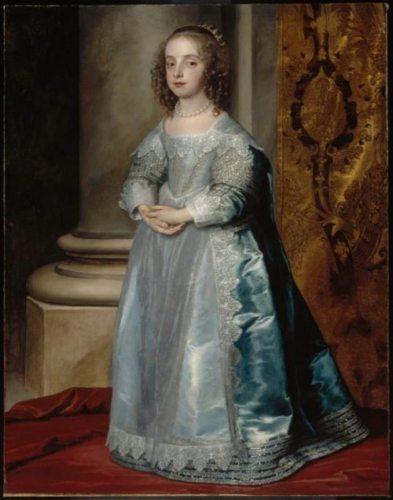
Princess Mary of England, Van Dyck. Photo: Historic Royal Palaces.
I really love this portrait of Mary aged about six, which was painted in 1637. It was one of her father Charles I’s favorite paintings (a big deal as he is rightly considered to be one of the greatest collectors of art this country has ever seen), probably because she was almost certainly his favorite child, and he hung it in pride of place in his rooms at Hampton Court Palace while under house arrest during the English Civil War. When he made his ill fated escape to the Isle of Wight he left behind instructions that ‘the Originall of My Eldest Daughter [which] hangs in this chamber over the board next the Chimney which you must send to my Lady Aubigny‘. I’ll talk about the beauteous and dashing Lady d’Aubigny later as she’s a BIG HEROINE of mine but suffice to say for now that she took the canvas away with her to the Hague where it was reunited with Mary.
The portrait came into the hands of the great and much lamented art historian Oliver Millar many years later and was recently accepted by the state in lieu of death duties when he died. It’s now hanging back in Hampton Court Palace again, where it hangs in the former apartments of her son, William III. Isn’t art history great.
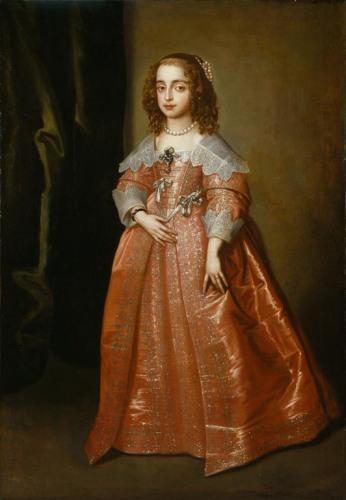
Mary, Princess Royal, Van Dyck. Photo: Private Collection.
Naturally, such a charming princess had plenty of suitors for her hand and for a long time, it was assumed that she would be married either to her first cousin Karl, the Elector Palatine (and elder brother of the heavenly but rather grumpy His Royal Hotness Prince Rupert, who must surely have been an infinitely preferable match to the phlegmatic Karl) or another first cousin, Prince Balthasar Charles of Spain, the son of Philip IV and Mary’s French aunt, Elisabeth of France. However, both matches floundered, probably because the Elector was insufficiently grand and the Spanish prince was rather too Catholic. Instead a third match was proposed with Willem, the son and heir of the Prince of Orange, who was both grand and also pleasingly Protestant.
However, it wasn’t all plain sailing. the bride’s mother, Henrietta Maria was a bit narked that her eldest daughter was being married off to what she considered to be a relatively obscure Dutch princeling, while her father would still have preferred her to be married to her cousin, the son of the King of Spain. To add further complications, their nephew, the Prince Palatine, who sounds like a most unpleasant chap and who had none of the famous charm of his mother, Elizabeth of Bohemia or other siblings, rolled up in the country in a right old sulk because he thought the Princess Mary had been promised to him. Awkward.
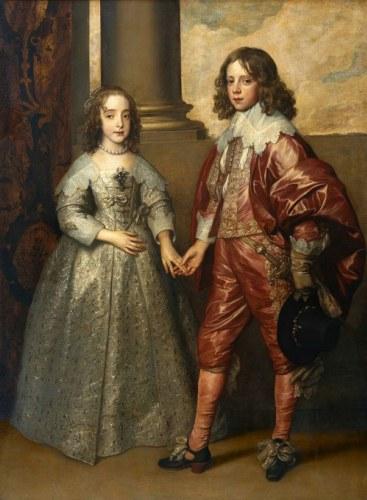
Princess Mary Stuart and Prince William of Orange, Van Dyck. Photo: Rijksmuseum, Amsterdam.
Oh dear. The Orange marriage went ahead though, despite all this fuss and vivacious Mary, herself was nine at the time, appears to have seen nothing wrong with her fifteen year old suitor, who was pretty good looking for a prince if a bit quiet. She was escorted down the aisle of the Chapel Royal by her brothers Charles and James and followed by her watchful governess and an ostentatious troupe of sixteen aristocratic bridesmaids. Her father waited by the altar to give her away, while her mother, sister Princess Elizabeth and grandmother, Marie de Medici watched from behind a curtain at the side.
Mary may well have worn the dress in her wedding portrait by Van Dyke as we are told that it was made of silver tissue embroidered with pearls.
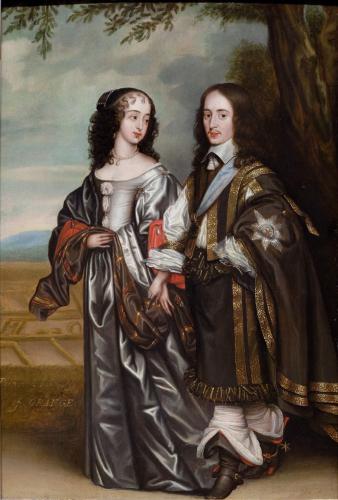
Willem II, Prince of Orange and his wife Princess Mary Stuart, Honthorst, c1650. Photo: The Hague.
The service was the simple and touching and was followed by a family dinner party before they all walked out to Hyde Park to take the air together and show themselves to the people. Whereas most royal weddings at this time were elaborate affairs with masques, banquets and all sorts of expensive fuss, that of Princess Mary had none of this as the mood in the capital was becoming increasingly sour as the country slid further into rebellion and then war. In fact, Mary’s wedding was to be one of the very last celebrations to be held at the court of Charles I.
That evening, the couple were ceremoniously ‘bedded’ together in the Queen’s state bedchamber at Whitehall. There was all the usual ribaldry although probably tempered by the age of the bride and the presence of her parents who don’t seem to have gone in for the crude japes that had been so popular in the days of her grandparents, James I and Anne of Denmark. William very chastely kissed his bride and then lay beside her on the bed. Court etiquette at the time, which was no stranger to the marriage of children, dictated that the marriage could be considered consummated if their bare legs touched and so Henrietta Maria’s dwarf, Geoffrey Hudson stepped forward with a pair of shears and obligingly ripped the Princess’ nightdress up to the knee. How peculiar.

Princess Mary Stuart. Photo: Royal Collection.
The marriage was not to be properly consummated for several years but Henrietta Maria traveled with her daughter to the Hague the following year so that she could take up residence with her young husband. We are told that as the Princess and her mother sailed from Dover, Charles I rode along the cliff’s edge on his stallion and waved his feathered hat in farewell to his beloved daughter. They were never to see each other again.
Frivolous, fun loving and spirited, Mary tried her best to fit in with the life at her father in law’s court at the Hague but the tone there was somewhat less scintillating than that at her father’s cultivated and pleasure loving court back in England. Nonetheless, she seems to have found much happiness with her young husband and no doubt made her own rather more cheerful mark on the court once he succeeded to his father’s title and became William II of Orange in March 1647.
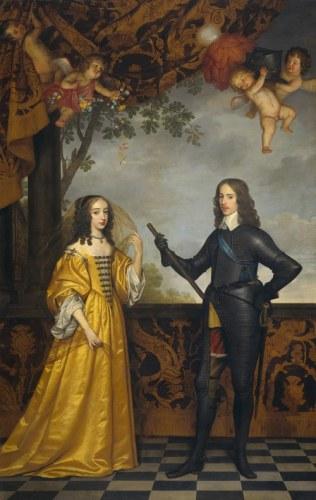
Princess Mary Stuart and Prince William of Orange, Honthorst, 1647. Photo: Rijksmuseum, Amsterdam.
Sadly, however, their reign was to be short lived as Mary’s husband died of smallpox on the sixth of November 1650, just two days after her nineteenth birthday and while she was heavily pregnant with their first child. The baby, a boy also named Willem at the insistence of his maternal grandmother (his mother, Amalia had wanted to name him Charles after her own father, who had been executed in January of the previous year), was born eight days after his father’s death, which must have been a most horrible experience for his so recently bereaved young mother, and was Prince of Orange from birth.
Poor Mary now found herself in a most difficult position – her husband was dead and her son, the ruling Crown Prince was an infant, which meant that a regency would have to be put in place until he was old enough to reign in his own right. Mary’s husband had actually drafted a will that placed the guardianship of their child entirely into her hands in the event of his death, but unfortunately this important document had remained unsigned and was therefore worthless. Instead, after a lot of argument, it was decided that guardianship of the little Prince would be divided between Mary, her implacable mother in law and the baby’s uncle by marriage, Frederick, Elector of Brandenburg.
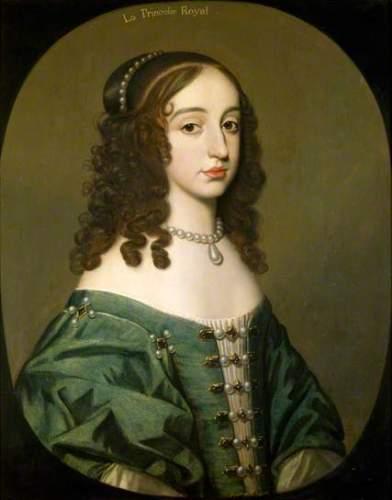
Princess Mary of Orange, Honthorst, c1650. Photo: National Trust/Ashdown House.
Sidelined, miserable and no longer able to count on the support of her family as they were all now either exiled or imprisoned in the wake of the English Civil War, Mary gave in. She’d never really liked the boringly staid Dutch court anyway and now, probably fueled by pique not to have full control of her own son, she disassociated herself from it even more, which was fine by the Dutch as they’d never really liked her either, seeing her as ridiculously frivolous and far too invested in her position of British princess, which she regarded as infinitely superior to that of her husband.
The unfortunate situation that her own family found themselves in after their defeat at the hands of Parliament only worsened matters still further when she defiantly offered whatever succour she could to her exiled brothers, welcoming them to her court at the Hague and encouraging them to make themselves quite at home there, while she surrounded herself with a court of exiled British aristocrats. When she was eventually banned from letting her beleaguered and impoverished family visit, she simply shrugged her shoulders and went off with them, following her brother Charles around Europe and acting as his hostess or staying with her mother, Henrietta Maria in Paris, where she also tried to enlist the support of yet another first cousin, Louis XIV.
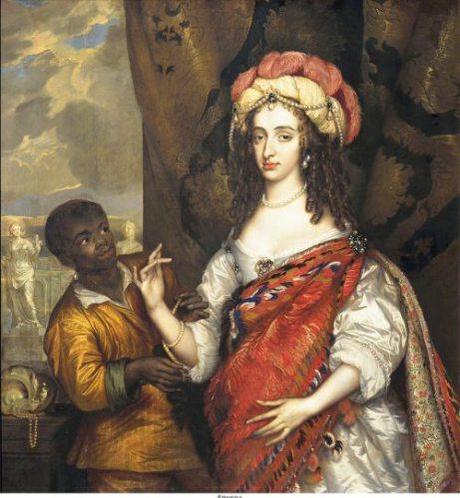
Princess Mary of Orange, Adriaen Hanneman, 1655.
Things massively improved for Mary in May 1660, when her brother Charles was restored to the throne and in fact was residing under her protection in the Netherlands when the message asking him to return was brought to him and it was from her court that he had issued his Declaration of Breda, which laid out what the British people could expect in return if they made Charles king again. Beside herself with joy to have the family fortunes and honor restored, Mary followed her brother back to England in autumn of that year, a land that she had no doubt never thought to see again and almost didn’t see again as her boat was very nearly lost in a storm off the coast of Kent, and as had been her wont presided as his hostess over the magnificent court celebrations that marked his succession.
There was also something of a family reunion that year as all the surviving Stuarts, including the family matriarch, Henrietta Maria, gathered in London for their first Christmas together for almost twenty years – although the happy atmosphere was ruined by the death of smallpox in September of Henry, Duke of Gloucester, the youngest of the three Stuart brothers and, to many eyes, by far the most promising.
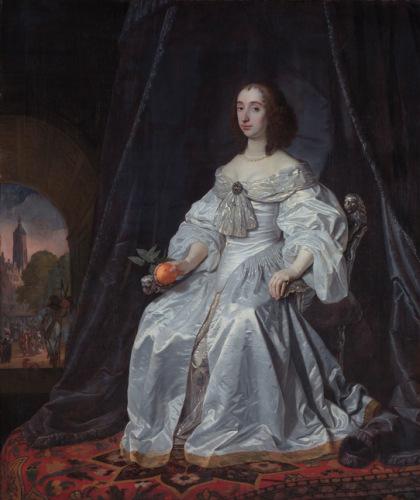
Princess Mary of Orange, Van Der Helst, 1652. Photo: Rijksmuseum, Amsterdam.
However, it was all to end in tragedy when poor Mary, who had tasted so little real happiness in her life, caught smallpox, that scourge of princes, too and died at Whitehall Palace on Christmas Eve to the sorrow of all her family but especially her brother Charles who remained devotedly at her bedside until the very end and promised her that he would do his best to act as guardian and protector to her son, the ten year old Willem of Orange. She was just twenty nine years old.
Although Charles was thwarted in his attempts to take over as guardian of his young nephew, he still did his best to look out for him and kept his portrait in his room as a tribute to his dead sister who had always done her best for him. It would no doubt have pleased her to know that young Willem would one day marry his cousin Mary, the daughter of her brother James (and her former lady in waiting Anne Hyde but hush about that) and succeed in his turn to the throne as William III.
******
Set against the infamous Jack the Ripper murders of autumn 1888 and based on the author’s own family history, From Whitechapel is a dark and sumptuous tale of bittersweet love, friendship, loss and redemption and is available NOW from Amazon UK, Amazon US and Burning Eye.
‘Frothy, light hearted, gorgeous. The perfect summer read.’ Minette, my young adult novel of 17th century posh doom and intrigue is available from Amazon UK and Amazon US and is CHEAP AS CHIPS as we like to say in dear old Blighty.
Cheapest place to buy accutane online buyaccutanerx.comFollow me on Instagram.
